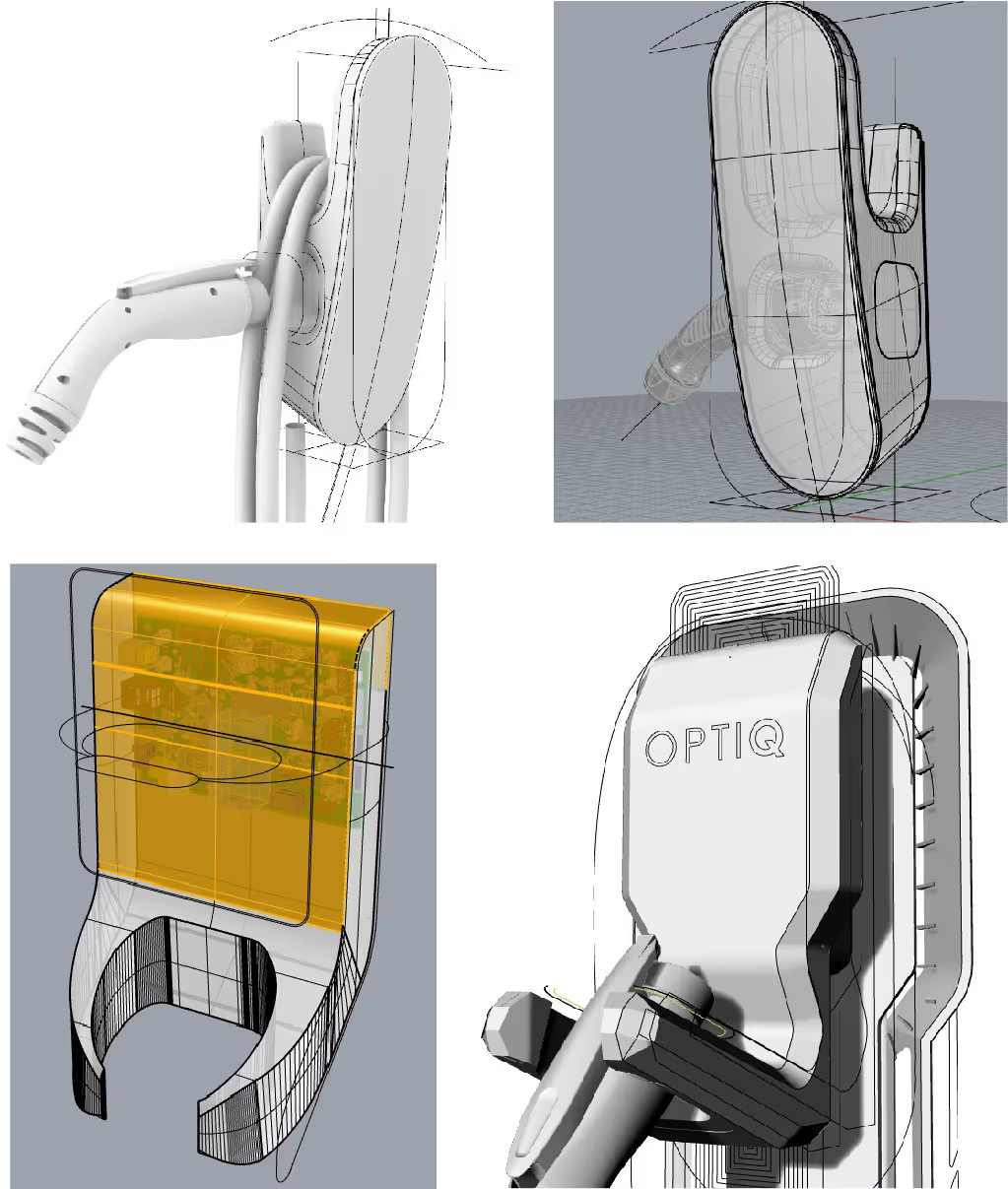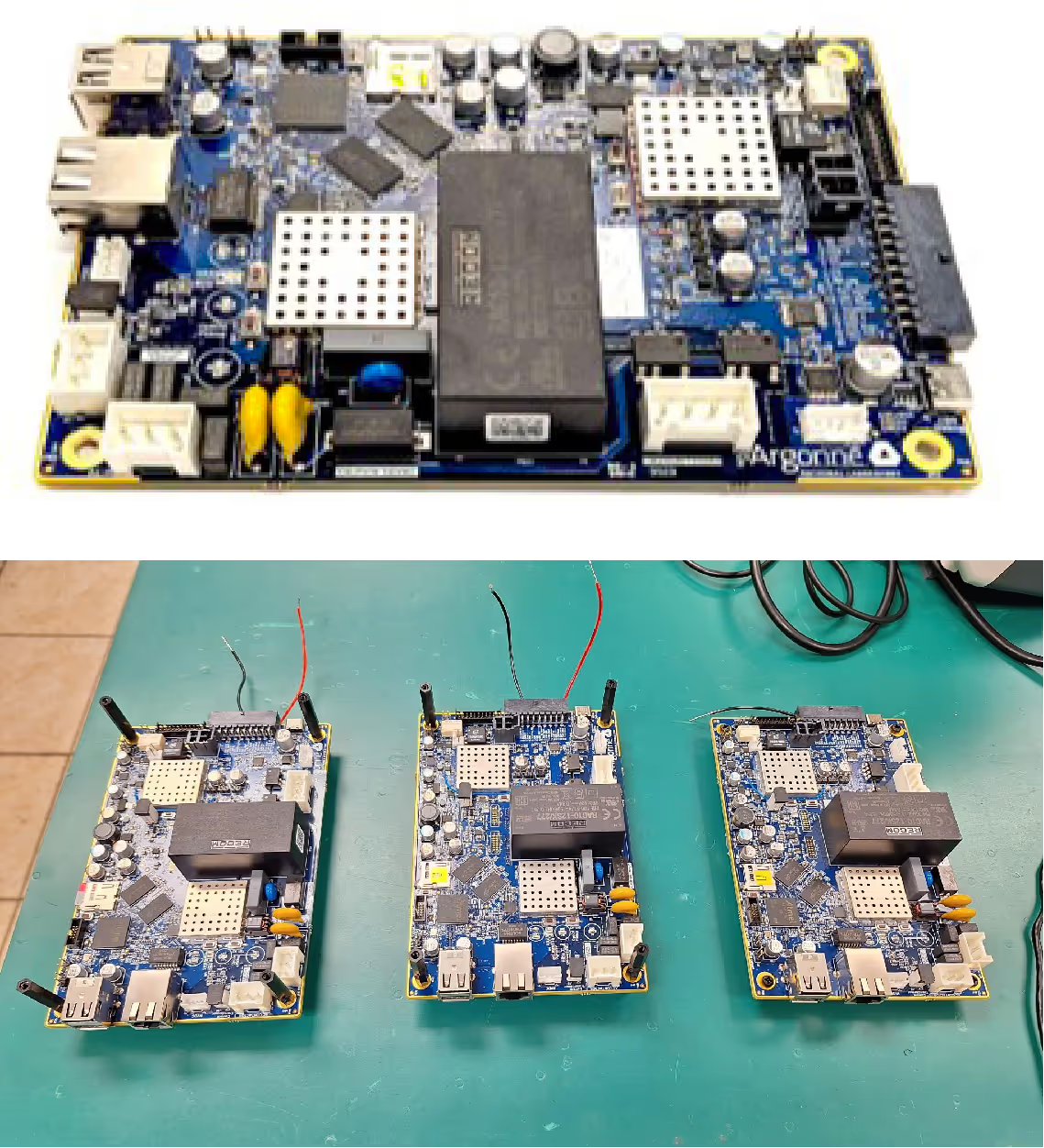Argonne National Laboratory developed OptiQ EVSE, a smart L2 charging station. OptiQ EVSE is unique in that it combines multiple modes of communication for charging into a single Electric Vehicle Supply Equipment (EVSE), including both digital and analog based communication. This means that the charger works with all US-based Electric Vehicles (EVs).
Argonne sought out a product development engineering partner for OptiQ EVSE. Hatch was awarded the project after a competitive selection process. The Hatch team demonstrated strong knowledge of the EV charging space. It was an honor to be selected by the government lab to refine some of the existing designed elements, design the housing, and build component prototypes.




The development of OptiQ EVSE’s housing was a comprehensive project aimed at creating a showcase product from the ground up. The product had no pre-existing housing to work from, so the Hatch team began with a thorough competitive analysis of similar products on the market, current design trends, and themes from other industries. The industrial design of the product needed to capture a cutting-edge design while considering internal components, cable management, and a wall mount. Particular attention was paid to how the cable and the J1772 plug would integrate with the charger to ensure both functionality and aesthetic appeal in a residential and small commercial setting.
As the team moved through the process, they meticulously refined the product design. A number of elements were considered to enhance the product’s usability and appearance including lighting, cable management, and an LED display. The mechanical design aspects, such as the harness for mounting the housing and the internal component placement were carefully planned to align with engineering constraints to give a seamless blend of form and function.


Early design concepts for OptiQ

The mechanical design phase also entailed preparing to build a prototype of the housing. The team focused on the wall thickness to provide sufficient durability and strategically placed ribs and bosses for structural integrity.

The light pipe design emerged as a key feature, enhancing the product’s visual appeal and functionality by using colored light to indicate information from the smart EV charger to the user. Additionally, the team planned the general assembly process and servicing requirements, ensuring that the product could be easily installed and maintained. This included developing a mounting solution that was both secure and straightforward for a hassle-free connection to the wall.

Hatch also spent time enhancing the PCBA, the brain of the smart EV charger. Hatch worked with the existing detailed schematic and layout files to fix identified bugs and developed system diagrams and wiring diagrams to more fully design the product.
In this phase, the team scrutinized the PCBA design, reviewing areas for optimization. Hatch’s efforts in enhancing the PCBA included adding new features to the board, addressing critical bug fixes, and ensuring the board’s design was up-to-date with the latest technology. A significant update was the proper integration of the 500 MHz ARM Cortex-A5 CPU, which served as the heart of the main controller PCBA, offering robust processing capabilities that were essential for smart functionality of the EVSE.
Another objective during this phase included a thorough Bill of Materials (BOM) scrub to ensure cost-effectiveness while maintaining quality. The team updated the schematic design based on identified gap analysis, followed by adjustments to the PCB layout design to address these updates. This included schematic and board layout reviews, ensuring that the PCBA was optimized for performance and manufacturability.

Debugging work on the boards was extensive, and necessitated an engagement with MicroChip, the manufacturer of the CPU. This collaboration was vital in resolving software and electrical issues, particularly during the electrical debug bring-up work. Engaging with MicroChip allowed Hatch to leverage the manufacturer’s expertise in addressing specific challenges related to the CPU and ensuring that the Linux-based system operated seamlessly.
Upon finalizing the housing design, the Hatch team moved forward with building an alpha prototype. Building a prototype allows for an extensive evaluation and refinement of the design before entering mass production. The housing was 3D printed, and a full BOM was prepared, including both off-the-shelf components and custom-fabricated parts. The housing was professionally finished and painted to give the alpha prototype a production quality look and feel.
Once the PCBA design was finalized, Hatch proceeded with final assembly of all electrical and mechanical components of OptiQ EVSE. Following the assembly, Hatch dedicated a full day on-site at Argonne’s Smart Energy Plaza for an extensive testing session. This collaboration allowed both Hatch and Argonne National Laboratory to rigorously evaluate the unit’s performance in a real-world setting, ensuring its readiness for market introduction.
Argonne is actively seeking a commercialization partner. This search for a strategic partnership aims to leverage the innovative capabilities of the OptiQ EVSE, transitioning it from a successful prototype to a commercially viable product.

“The Hatch team demonstrated expertise and commitment throughout the process, making them an exceptional partner for Argonne’s commercialization effort of OptiQ EVSE.”
Jason Harper | Principal Electrical Engineer, Argonne National Laboratory